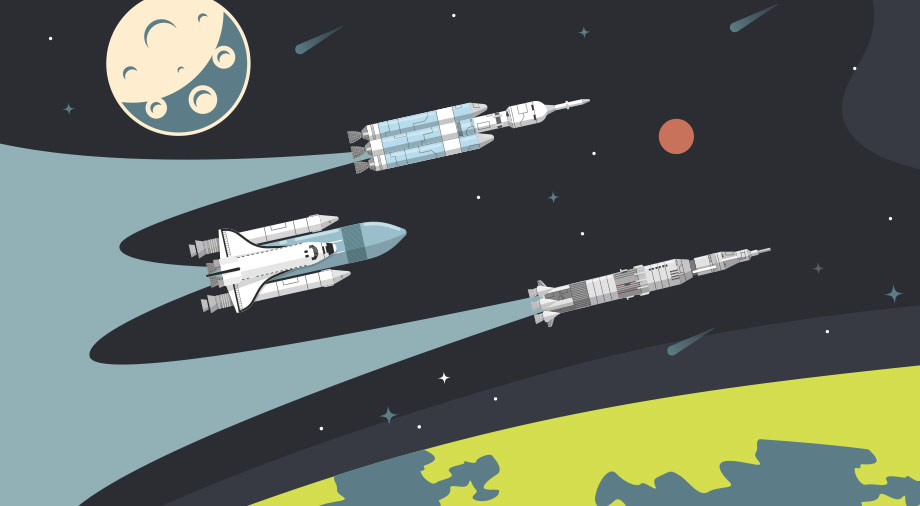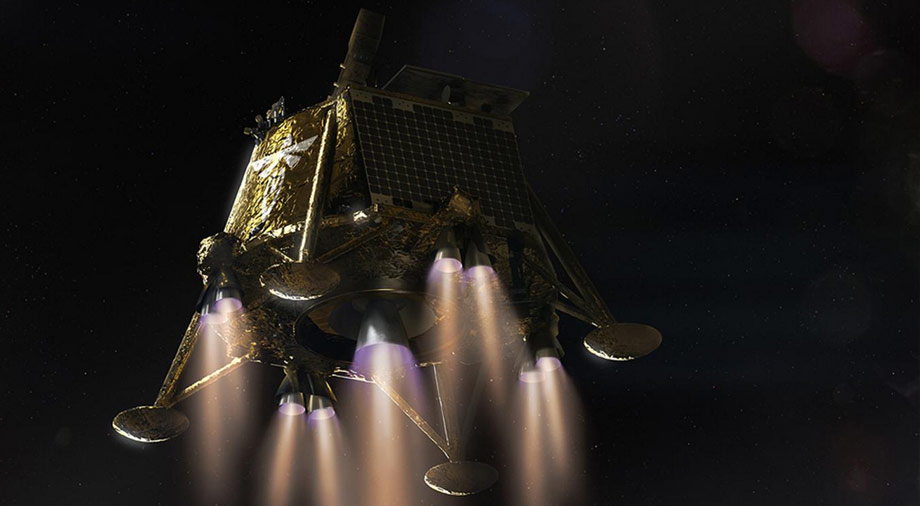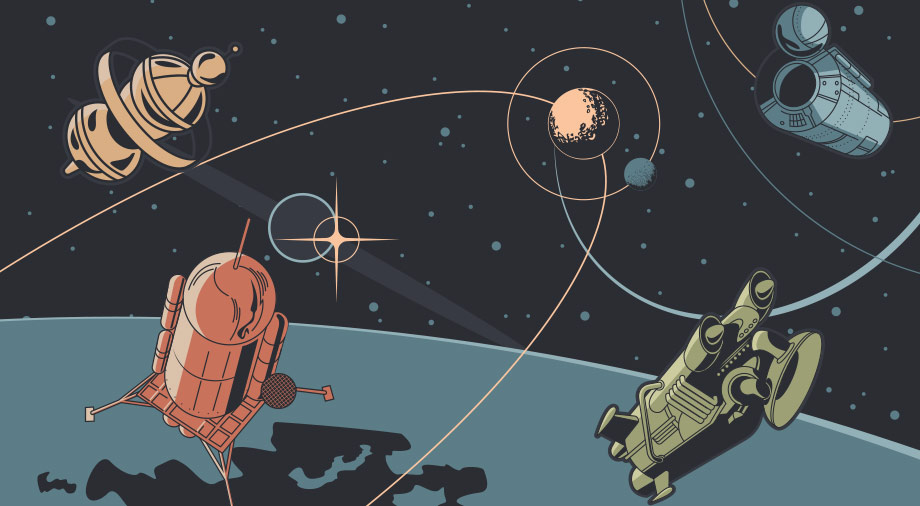It is difficult to imagine modern life without orbitally-based services like GPS, weather forecasts, maps, and satellite communications. But space exploration beyond orbit has also yielded indispensable technologies, like the modern digital camera, non-contact thermometers, food safety protocols, and hundreds of other devices and technologies.
These technologies even have myths behind them. For example, it is suspected that the boots worn by the Apollo 11 astronauts who first visited the moon were prototypes of modern running shoes. This was not in fact the case, as the boots were created for walking rather than running. The “flying gait” effect we see when watching astronauts on the moon is caused by the moon’s dramatically-lower gravity — six times lower than on Earth.
There is another myth about “Velcro,” which was supposedly created specifically for space expeditions. It was actually invented in 1941, long before the space race, by Georges de Mestral, a Swiss electrical engineer. He got the idea from the burs which got caught in his dog’s fur when walking outdoors. The hook-and-loop fastening technology would become highly useful in both space missions and everyday life.
So what technologies actually did come from space?
The HACCP food safety system
In the 1960s, NASA wanted to improve the quality of “space food” while preparing for manned space flights to eliminate the possibility of its astronauts getting food poisoning while in space.
This required a completely new certification system, because the existing standards could not fully guarantee food safety.
The creation of a new system was simultaneously undertaken by NASA and the US Army Laboratories at Natick, Masssachussets, with the cooperation of Pillsbury, one of America’s largest food producers.
Pillsbury debuted the result for the general public, called the HACCP (Hazard Analysis and Critical Control Point) protocol, in 1971 at the First American National Conference on Food Safety. It used a variety of mathematical methods to analyze risks and hazards during food production.
This concept formed the basis for new food safety standards in the United States, and later Canada, the European Union, and several other countries, because it ensured high quality foods and reduced the likelihood of contaminants or unsafe products getting into the food supply.
You can now find the HACCP label as a mark of quality and food safety on the packaging of many of the food products you buy.

Air purification systems
While conducting experiments in orbit, astronauts noticed an interesting trend with plants: the vegetables in space laboratories ripened much faster than on Earth.
The reason for this is the ethylene gas emitted by the plants. Unlike the Earth, this gas can accumulate in large quantities in the closed environments of spacecraft.
For vegetables and fruits, this gas works as a natural hormone that stimulates ripening. Since this phenomenon greatly interfered with experiments in orbit, scientists developed a device in the 1990s called a “scrubber.” It recycles and purifies air with the help of special tubes, and solves the problem of high ethylene concentrations.
Later, the scrubber found use on Earth, as scientists found that it can not only clear the air of ethylene, but also kill dangerous airborne pathogens. This brought about the emergence of air purification systems here on Earth, which not only keep goods fresh in warehouses and markets, but also help to decontaminate the air.
Insulin pumps
The Viking spacecraft were launched in 1976 to explore Mars. They took surface surveys and conducted scientific experiments to find signs of life on the planet. In one such experiment, the lander’s apparatus was programmed to combine Martian soil and water in very precise proportions.
Decades later, this technique proved very handy back on Earth. Scientists used the same methodology of programmed liquid infusion to develop the special pumps that people with type 1 diabetes use to receive constant injections of insulin into their bloodstreams.
The pump works like an artificial pancreas, constantly calculating and supplying the insulin doses the patient needs.
The device made it possible to deliver more carefully-calculated doses than with repeated injections. This helps people living with type 1 diabetes to control their blood sugar levels more accurately and also decreases their likelihood of developing long-term complications from their condition.
Infrared thermometers
The IRAS orbital telescope was the first to be able to survey the entire night in infrared. It made a number of unexpected discoveries, including six new comets, the nucleus of our galaxy, temperature measurements of stars and planets, all by measuring infrared radiation emissions.
One American company decided to adapt the technology to measure temperatures here on Earth. Nowadays, every time you have your temperature scanned to enter a building, the scanner is using an infrared sensor similar to those used to measure the temperature of celestial bodies.
Digital photography
Almost everything that modern cameras can do is the result of space technologies.
The CMOS sensor was created to improve the quality of images for interplanetary missions. The light sensor now makes up the “eyes” in almost every video camera or smartphone. It captures light entering the camera lens and converts it into an electronic signal. The advantage of CMOS sensors over predecessor technologies is that they capture high quality images while consuming very little power.
Wireless headsets
Astronauts on manned space missions like Gemini, Apollo and Skylab needed a compact wireless headset to keep in touch with NASA’s mission control center while also having their hands free to work and move themselves in zero gravity.
When building these new headsets, engineers improved the microphone design and added a noise cancellation function. Over time, noise canceling technology has migrated to Bluetooth headphones and most modern headsets.





